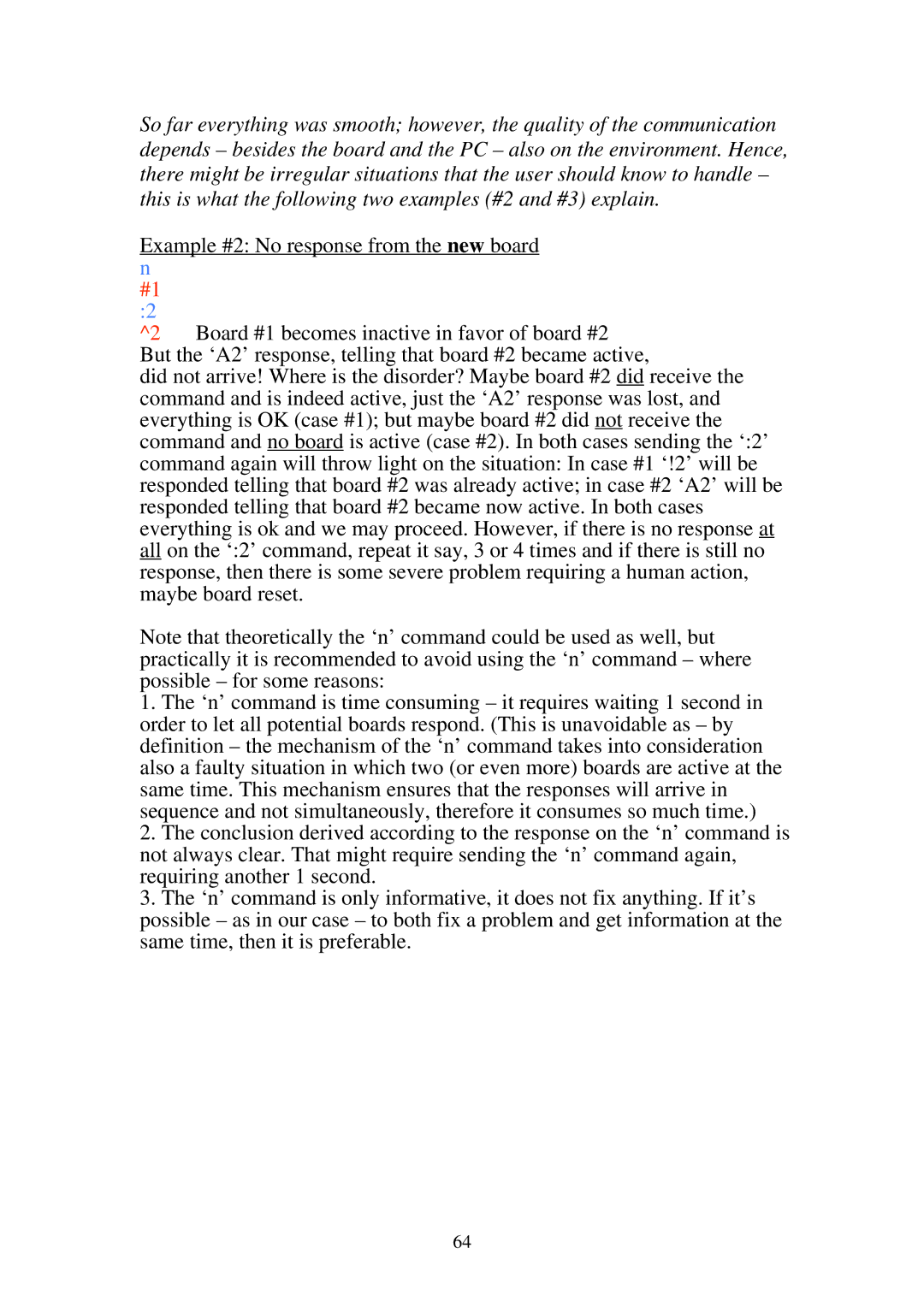So far everything was smooth; however, the quality of the communication depends – besides the board and the PC – also on the environment. Hence, there might be irregular situations that the user should know to handle – this is what the following two examples (#2 and #3) explain.
Example #2: No response from the new board n
#1
:2
^2 Board #1 becomes inactive in favor of board #2
But the ‘A2’ response, telling that board #2 became active,
did not arrive! Where is the disorder? Maybe board #2 did receive the command and is indeed active, just the ‘A2’ response was lost, and everything is OK (case #1); but maybe board #2 did not receive the command and no board is active (case #2). In both cases sending the ‘:2’ command again will throw light on the situation: In case #1 ‘!2’ will be responded telling that board #2 was already active; in case #2 ‘A2’ will be responded telling that board #2 became now active. In both cases everything is ok and we may proceed. However, if there is no response at all on the ‘:2’ command, repeat it say, 3 or 4 times and if there is still no response, then there is some severe problem requiring a human action, maybe board reset.
Note that theoretically the ‘n’ command could be used as well, but practically it is recommended to avoid using the ‘n’ command – where possible – for some reasons:
1.The ‘n’ command is time consuming – it requires waiting 1 second in order to let all potential boards respond. (This is unavoidable as – by definition – the mechanism of the ‘n’ command takes into consideration also a faulty situation in which two (or even more) boards are active at the same time. This mechanism ensures that the responses will arrive in sequence and not simultaneously, therefore it consumes so much time.)
2.The conclusion derived according to the response on the ‘n’ command is not always clear. That might require sending the ‘n’ command again, requiring another 1 second.
3.The ‘n’ command is only informative, it does not fix anything. If it’s possible – as in our case – to both fix a problem and get information at the same time, then it is preferable.
64
